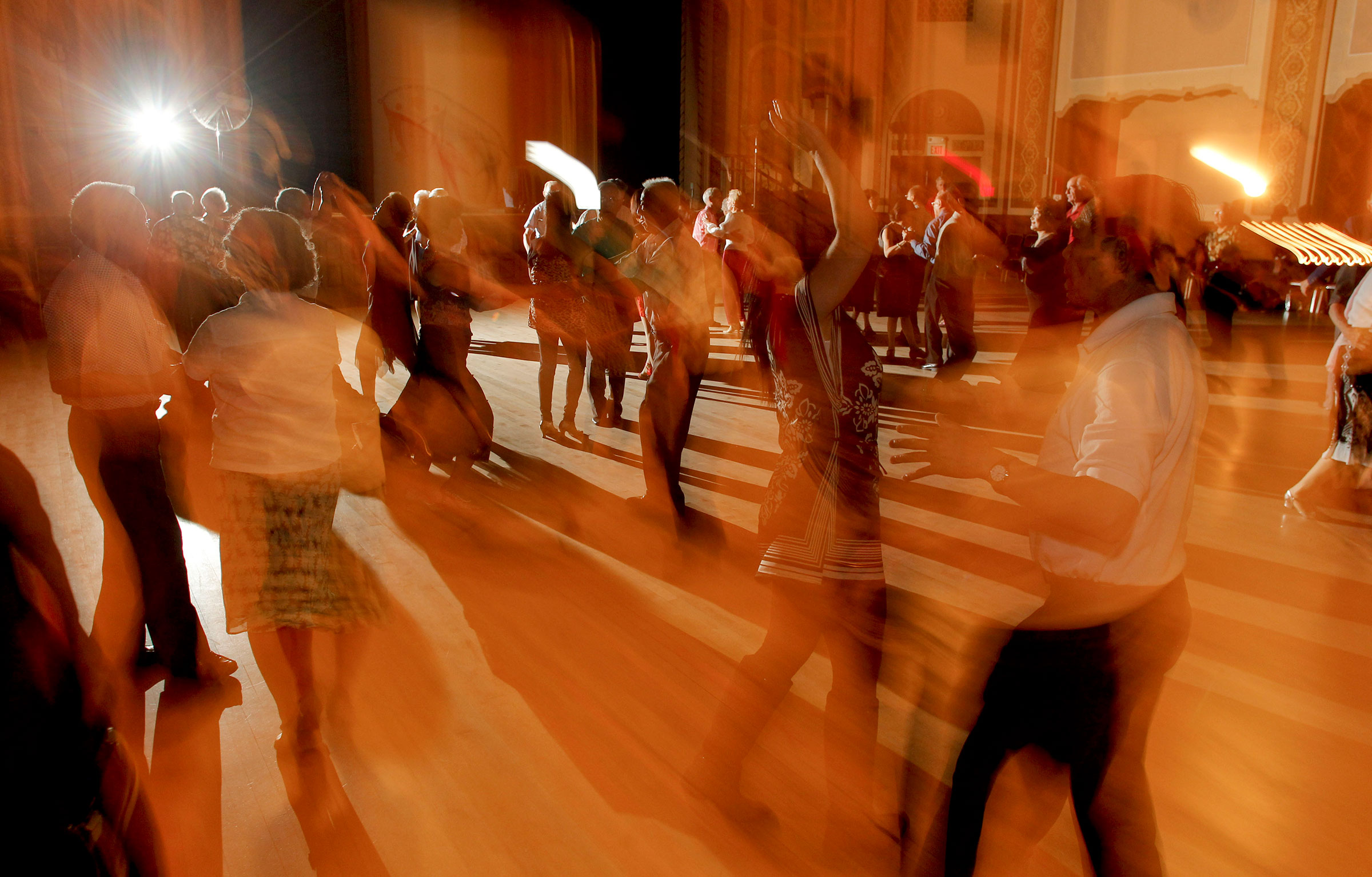
When George R. Uba heard the news about the devastating mass shooting at Star Ballroom Dance Studio in Monterey Park, Calif., on Jan. 21, he was stunned by the knowledge that such violence could occur in a place he holds dear. For over three decades, Uba, a retired professor of English and Asian American studies at California State University, Northridge, has been a regular at Star, like many other senior citizens in the area. He started with ballroom dancing lessons, then later began attending dance socials on Saturday nights with his wife. Uba describes the studio as a gathering space for Monterey Park’s Asian American and Pacific Islander community as much as it is a place to practice the foxtrot.
“This came as a complete shock to us,” he says. “You wouldn’t expect anything like this to happen there.”
The attack happened just an hour after the city’s Lunar New Year festival ended, marking a time of celebration with sudden terror and sorrow. The gunman killed 11 people and injured nine others before being disarmed at a second studio; the victims from the Star Ballroom attack were all in their 50s, 60s, and 70s, and included immigrants from China, Taiwan, and the Philippines. (The shooter died from a self-inflicted gunshot wound on Jan. 22.)
Read More: Rep. Judy Chu on the Mass Shooting That Shattered Lunar New Year Joy in Her Hometown
Ballroom dancing has long been a staple of many Asian immigrant communities not only in Monterey Park, but also across the U.S., especially for elders. Uba published a paper on the topic in the Journal of Asian American Studies in 2007, arguing that AAPI dancers represent a major part of ballroom dance culture across the country. Star Ballroom, an important venue for the AAPI dance community in Southern California, offers more than 40 classes each week and has served more than 10,000 students over its 30-plus years in business.
Uba says that there are three main reasons why the activity has become such a mainstay for older folks in Asian American and Asian immigrant communities.
“First, it’s good aerobic exercise—and when you’re a senior, you want something that’s enjoyable but helps you move,” he says. Second, it’s about spending time with other people in a low-pressure setting. “People interact with whoever is close to them, but there’s usually no hostility. Anyone is welcome—it’s kind of a safe social space.” Third, he says, is the universal appeal of dance: “No matter what your background is, everyone just wants to look nice when they’re on the dance floor.”
Uba also points to the vibrant street nightlife in places like Hong Kong, Taiwan, and South Korea as a reason why Asian immigrants have embraced ballroom dancing after moving to the U.S. “It reinforces that within a larger AAPI community, they have their own social communities,” he says.
Read more: It Took a ‘Good Guy Without a Gun’ to Disarm the Monterey Park Shooter
For Irene Ng, the owner of Imperial Ballroom, one of the longest-running ballroom dance studios in Manhattan’s Chinatown, the social aspect of ballroom has been the through line of not only her business, but also her personal life. She met her husband because of their shared love of ballroom dancing, which led to the couple opening their studio in 1995. They’ve been teaching dance at Imperial for the past 28 years.
“It’s the community,” Ng says. “People come together to meet new dance partners, but also to meet new friends. They might come to dance but then want to go to dim sum afterwards. They just want to have fun.”
San Manh, the owner of Just Dance Ballroom in Oakland’s Chinatown, agrees that one of the biggest draws of ballroom dancing can be finding community. “It’s the best way to meet friends—because there is no house that is as big as a dance studio,” he says.
Ng also pointed out that for many seniors in her community, the available leisure activities available are limited. “People will do karaoke, they play mahjong, maybe they go to Atlantic City for gambling, and that’s about it,” she says. “For many of them, dancing is the best because they can always learn new dances and new moves. It helps you think and move.”
Read more: How One Dance Studio Became a Bulwark Against Loneliness in New York City’s Chinatown
And while some might find it surprising that a dance form that originated in 16th-century Europe has become such a popular pastime for older Asian Americans, Uba says that dancing in spaces like Star Ballroom can be a revolutionary act. Just before the Jan. 21 attack, according to the New York Times, the nearly 100 patrons at Star Ballroom were practicing their moves to the sounds of guangchang wu, the music of Chinese square dancing.
“Western dances can carry certain colonial implications, and ballroom dancing in particular often has bourgeois associations,” says Uba. “But at these dance studios, these associations get subverted by this critical mass of Asians on the dance floor. In a way, they’re claiming this as their own cultural space.”
For Ng, this subversive act is part of her daily routine, one that she hopes the AAPI ballroom community will not abandon out of fear.
“I just hope that people will continue dancing, especially the seniors,” she says. “I hope people will not see the tragedy in California as a reason to stop. We shouldn’t let evil win—we should continue our daily lives and dance.”
More Must-Reads from TIME
- Donald Trump Is TIME's 2024 Person of the Year
- Why We Chose Trump as Person of the Year
- Is Intermittent Fasting Good or Bad for You?
- The 100 Must-Read Books of 2024
- The 20 Best Christmas TV Episodes
- Column: If Optimism Feels Ridiculous Now, Try Hope
- The Future of Climate Action Is Trade Policy
- Merle Bombardieri Is Helping People Make the Baby Decision
Write to Cady Lang at cady.lang@timemagazine.com